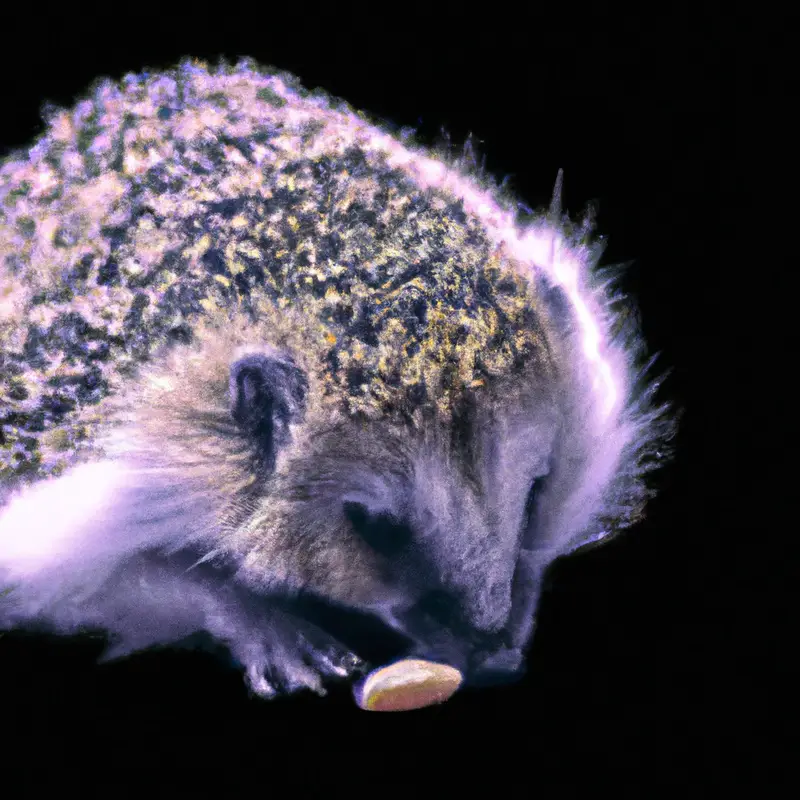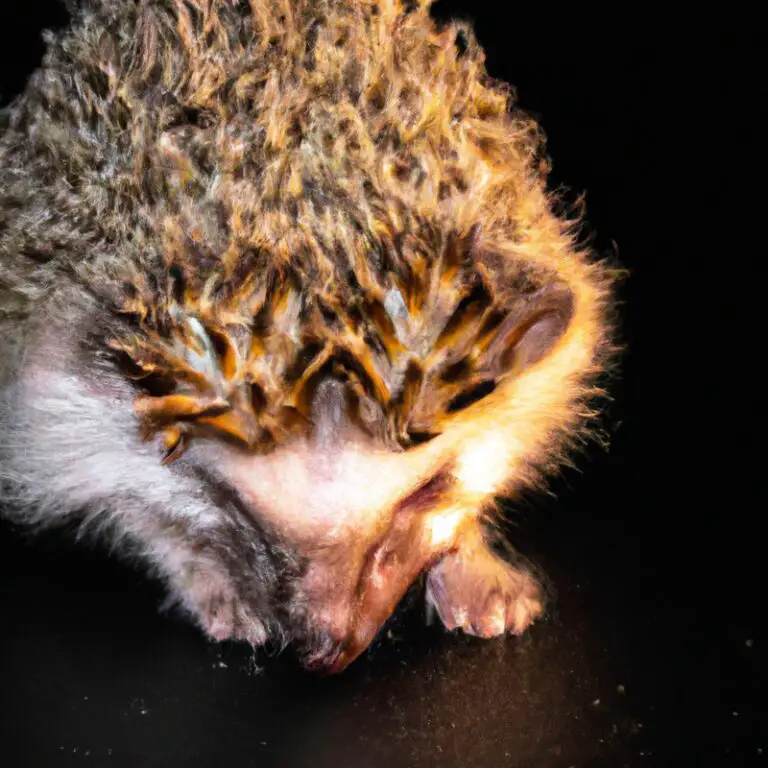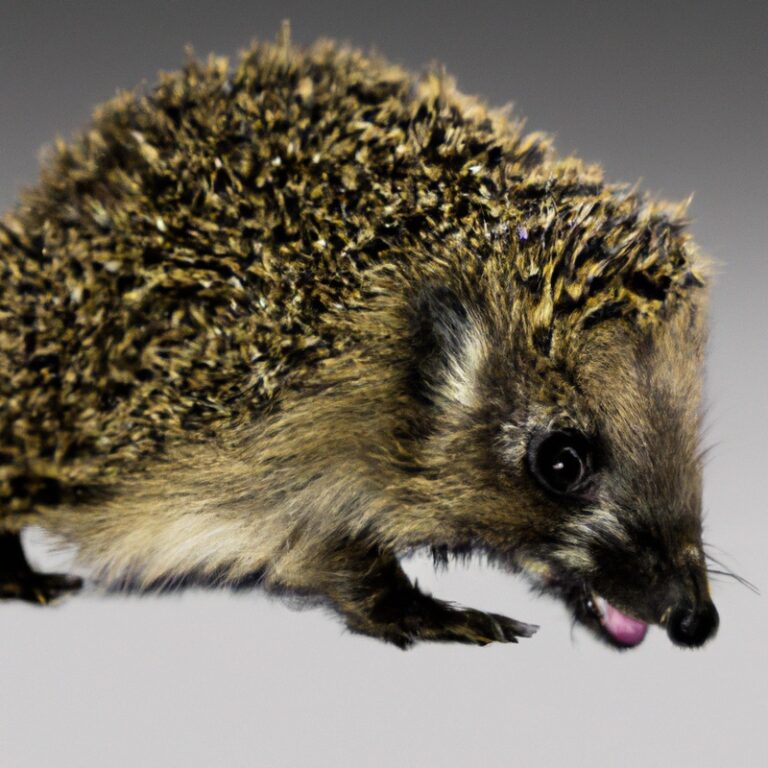How Do Hedgehogs Protect Themselves From Predators?
Key Takeaways:
- Hedgehogs protect themselves from predators by rolling into a tight ball, with their spiky quills serving as a barrier.
- They also rely on their excellent sense of hearing and smell to detect and avoid potential threats.
- Hedgehogs are nocturnal animals, which adds an extra layer of protection as most predators are active during the day.
- If all else fails, hedgehogs can use their sharp teeth and the ability to emit a loud hissing sound as a last resort defense mechanism.
Have you ever wondered how hedgehogs manage to survive in the wild, surrounded by predators?
These adorable little creatures seem so defenseless, but don’t let their cute appearance fool you.
Hedgehogs have developed some incredible techniques to protect themselves against potential threats.
From their iconic spikes to their ability to roll into a tight ball, hedgehogs have a range of physical and behavioral adaptations that keep them safe.
In this article, we’ll explore the fascinating ways in which hedgehogs defend themselves and dive into some specific examples of predator-prey interactions.
Get ready to be amazed by these prickly little heroes!
| Methods | Description |
| Spines | Hedgehogs have spines covering their backs and sides as a primary defense mechanism. When threatened, they roll into a tight ball, exposing only their spiky exterior. |
| Camouflage | Some species of hedgehogs have fur that matches their surroundings, allowing them to blend in with the environment and remain undetected by predators. |
| Nocturnal Behavior | Hedgehogs are primarily active during the night, which reduces their chances of encountering diurnal predators. |
| Quills | Hedgehogs have specialized quills that detach easily and become lodged in a predator’s skin, causing discomfort and discouraging further attacks. |
| Hissing and Snorting | When feeling threatened, hedgehogs may make loud hissing or snorting noises to intimidate their predators and warn them to stay away. |
| Behavioral Adaptations | Hedgehogs may exhibit unique defensive behaviors, such as ramming or circling, to deter predators and increase their chances of survival. |
Physical adaptations of hedgehogs for self-defense
Hedgehogs have several physical adaptations that help them defend themselves against predators. Their spikes or quills serve as a primary defense mechanism, they can roll into a ball for protection, and their thick and muscular skin acts as an additional deterrent.
Spikes or quills as a primary defense mechanism
Hedgehogs have a unique defense mechanism – spikes or quills. These sharp spines cover their back and sides, serving as a primary means of protection from predators.
When threatened, a hedgehog will curl into a ball, exposing only their sharp quills.
This makes it difficult for predators to attack or eat them. The spines are stiff and easily penetrate the skin of potential predators, acting as a deterrent and providing an effective defense strategy.
Rolling into a ball: explanation and effectiveness
Rolling into a ball is a unique defense mechanism of hedgehogs. When they feel threatened, hedgehogs curl up by bringing their spiky quills together, forming a protective barrier.
This helps to deter predators and keeps them safe from harm.
The effectiveness of this defense strategy lies in the fact that the sharp quills are directed outward, making it difficult for predators to attack or swallow the hedgehog. It’s a simple yet effective way for hedgehogs to protect themselves in the wild.
Thick and muscular skin to deter predators
Hedgehogs have thick and muscular skin, which serves as a defense mechanism against predators. Their skin is covered in sharp spines that deter predators from attacking.
When threatened, hedgehogs can roll into a ball, protecting their vulnerable underside and exposing the spines.
This physical adaptation allows them to ward off potential threats and escape unharmed. With their impressive armor-like skin, hedgehogs have developed an effective way to defend themselves and stay safe in the wild.

Behavioral adaptations of hedgehogs for self-defense
Hedgehogs have developed various behavioral adaptations to protect themselves from predators such as being nocturnal, using hiding and camouflage techniques, and employing defensive vocalizations.
Nocturnality as a survival strategy
Nocturnality, or being active at night, is a survival strategy used by many animals, including hedgehogs. By being active during the darkness, hedgehogs can avoid the majority of their predators, which are more active during the day.
This helps them stay hidden and reduces the risk of being seen by predators.
Nocturnality also allows hedgehogs to take advantage of the quieter and cooler night environment to search for food and roam their territories without as much competition or disturbance.
Hiding and camouflage techniques
Hedgehogs have developed remarkable hiding and camouflage techniques to protect themselves from predators.
They rely on their ability to blend into their surroundings to go unnoticed.
One technique they use is curling up into a tight ball, exposing only their spiky exterior, which acts as a deterrent to many predators.
Another technique is selecting hiding spots in vegetation, such as dense bushes or under fallen leaves, where their brown and spiky coat blends in with the environment.
These camouflage techniques help hedgehogs stay out of sight and increase their chances of survival.
Use of defensive vocalizations
Hedgehogs use defensive vocalizations as a way to protect themselves from predators. When threatened, they make a loud hissing or snorting sound to intimidate and warn their adversaries.
This vocalization acts as a signal for the predator to back off and avoid confrontation.
It is a natural form of defense that helps hedgehogs stay safe in their environment. By using defensive vocalizations, hedgehogs are able to defend themselves without having to rely solely on physical abilities.
Special abilities of hedgehogs for self-defense
Hedgehogs possess special abilities for self-defense, such as their ability to swim and climb to escape predators, their excellent sense of hearing and smell, and their adaptation to burrowing for safety.
Ability to swim and climb as escape mechanisms
Hedgehogs have two impressive abilities that help them escape from predators: swimming and climbing.
With their strong legs and sharp claws, they can easily climb trees, bushes, and walls to reach higher ground.
This allows them to seek refuge from threats above the ground.
Additionally, hedgehogs are surprisingly good swimmers.
They have a layer of air trapped within their spines, making them buoyant in water.
This enables them to paddle and float, escaping danger if they encounter it near bodies of water.
These skills give hedgehogs an advantage when it comes to survival in the wild.

Excellent sense of hearing and smell
Hedgehogs have an excellent sense of hearing and smell. Their keen hearing allows them to detect even the slightest sounds in their environment, helping them to pinpoint potential predators or approaching danger.
Their sense of smell is also exceptional, enabling them to identify food sources and detect predators from a distance.
These heightened senses contribute to their ability to protect themselves and stay safe in their surroundings.
Adaptation to burrowing for safety
Hedgehogs have adapted to burrowing as a means of ensuring their safety.
They possess strong, muscular bodies and sharp claws that allow them to easily dig into the ground and create burrows.
These burrows provide them with protection from predators by giving them a safe place to hide and sleep.
Hedgehogs are nocturnal creatures, so their burrows also provide them with a comfortable and secure environment to rest during the day.
This adaptation to burrowing enables hedgehogs to avoid potential dangers and stay safe in their natural habitats.
Specific predators and hedgehog response
Foxes and hedgehog avoidance techniques; Badgers and hedgehog retreat strategies; Birds of prey and hedgehog camouflage methods.
Foxes and hedgehog avoidance techniques
Foxes pose a significant threat to hedgehogs, but these spiky creatures have developed some clever strategies to avoid becoming dinner. Hedgehogs rely on their strong sense of smell and hearing to detect approaching foxes and quickly retreat to the safety of dense vegetation or their burrows.
They also have the ability to roll into a tight ball, tucking their vulnerable head and belly away from predators.
By using these evasion tactics, hedgehogs increase their chances of surviving encounters with foxes.
Badgers and hedgehog retreat strategies
Badgers are one of the main predators that hedgehogs need to protect themselves from. Hedgehogs have developed retreat strategies to avoid being caught by badgers.
They will seek refuge in hedgerows, under shrubs, or in dense vegetation to hide from badgers.
Hedgehogs also have the ability to roll into a ball, tucking their head and legs inside their spiky exterior when they feel threatened. This provides them with some defense against badger attacks.
Birds of prey and hedgehog camouflage methods
Birds of prey, such as owls and hawks, pose a threat to hedgehogs. To protect themselves, hedgehogs have developed remarkable camouflage methods.
These include their spiky exterior, which helps deter predators.
Additionally, hedgehogs have a remarkable ability to roll up into a tight ball, hiding their vulnerable body parts behind their sharp spines. When curled up, they resemble a prickly ball or stone, making it difficult for birds of prey to spot them.
This clever adaptation helps hedgehogs stay safe from predators in their natural habitats.
Human impact on hedgehog survival and protection
Human activities have a significant impact on hedgehog survival and protection.
Urbanization and loss of habitat
Urbanization and loss of habitat have greatly impacted hedgehog survival.
As urban areas expand, natural habitats are being destroyed, leaving hedgehogs with fewer places to find food and shelter.
Deforestation, building developments, and road networks disrupt their ability to move freely and find suitable environments.
As a result, hedgehogs are often forced to inhabit fragmented habitats, making them more vulnerable to predators and reducing their ability to find mates.
Addressing the issue of urbanization and loss of habitat is crucial for the long-term survival of hedgehog populations.
Hedgehogs as roadkill and measures to prevent accidents
Hedgehogs are often victims of road accidents.
To prevent these accidents, there are several measures you can take.
First, be cautious while driving, especially in areas known to have hedgehog populations.
Second, adhere to speed limits and avoid speeding, as this will give you more time to react if a hedgehog crosses the road.
Finally, install hedgehog-friendly fencing around your property to keep them from wandering onto roads.
These simple steps can help protect hedgehogs and prevent unnecessary casualties.
Frequently Asked Questions (FAQs) about hedgehog protection
Are hedgehogs dangerous to humans?
Hedgehogs are not dangerous to humans. They are generally docile and shy animals that are more likely to roll into a ball or run away when they feel threatened.
Their quills provide a natural defense mechanism against predators, but they are not harmful to humans.
However, it’s important to handle hedgehogs gently and wash your hands afterward to avoid any potential bacteria they may carry.
Can hedgehogs be kept as pets?
Yes, hedgehogs can be kept as pets.
They are small, quiet, and low-maintenance animals that can make adorable companions.
However, it’s important to note that they have specific care needs.
Hedgehogs require a proper diet, temperature-controlled environment, and plenty of mental and physical stimulation.
They can also have prickly spines and may not enjoy being handled as much as other pets.
Make sure to do thorough research and consult with a veterinarian familiar with hedgehogs before considering one as a pet.
How can I attract hedgehogs to my garden and provide a safe environment for them?
To attract hedgehogs to your garden and create a safe environment for them, you can:
- Provide shelter: Leave areas of your garden untidy, with piles of leaves, logs, and bushes that hedgehogs can use for nesting and hibernation.
- Offer food and water: Leave out dishes of fresh water and provide a hedgehog-friendly diet, such as wet cat or dog food, mealworms, or specially-formulated hedgehog food.
- Create access points: Ensure there are gaps in your fences or provide ramps for hedgehogs to enter and exit your garden easily.
- Avoid the use of chemicals: Try to limit the use of pesticides and avoid slug pellets, as these can be harmful to hedgehogs.
- Check for hazards: Regularly check your garden for any potential dangers, such as ponds or uncovered drains, and make them hedgehog-proof.
Final Verdict
Hedgehogs have an array of physical, behavioral, and special adaptations that allow them to effectively protect themselves from predators.
Their spikes or quills serve as a primary defense mechanism, while their ability to roll into a ball provides a strong barrier against potential threats.
Their thick and muscular skin also deters predators.
Behaviorally, hedgehogs are nocturnal and use hiding, camouflage, and defensive vocalizations to avoid confrontation.
They have the ability to swim, climb, and burrow as escape mechanisms and possess an excellent sense of hearing and smell.
However, human impact, such as urbanization and roadkill, poses a threat to their survival.
Overall, understanding and appreciating these defense mechanisms can help us better protect and preserve these fascinating creatures.
In summary, hedgehogs protect themselves from predators through a combination of physical, behavioral, and special adaptations.
Their spikes, ability to roll into a ball, and thick skin provide a formidable defense.
They are nocturnal and use hiding, camouflage, and vocalizations to avoid predators.
Hedgehogs can swim, climb, and burrow for safety and possess acute senses.
However, human activities, such as urbanization and roadkill, endanger their survival.
By creating safe habitats and reducing human impact, we can ensure the continued protection of these unique creatures.







